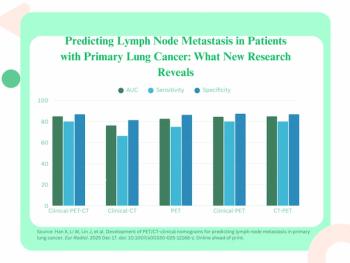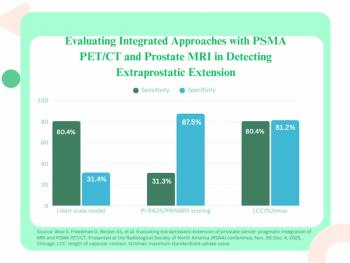
Acuson, Agfa to work together on integrating Aegis and Impax
Acuson, Agfa to work together on integrating Aegis and ImpaxRelationship could evolve into co-marketing situation In today's competitive PACS market, partnerships between PACS companies can prove crucial to the success of both
Acuson, Agfa to work together on integrating Aegis and Impax
Relationship could evolve into co-marketing situation
In today's competitive PACS market, partnerships between PACS companies can prove crucial to the success of both companies. Ultrasound miniPACS provider Acuson and PACS vendor Agfa are hoping that approach will prove beneficial to them. The two firms have agreed to work together on integrating their two PACS product lines, with the goal of seamless interoperability between the Acuson Aegis ultrasound miniPACS offering and Agfa's Impax PACS product line, according to the two companies.
"We still feel that there is an extremely valuable market for miniPACS environments, particularly in the ultrasound domain," said Bob Cooke, director of network solutions for Ridgefield Park, NJ-based Agfa. "The ultrasound miniPACS requirements are specifically different from large-scale PACS requirements, and we feel that the marriage between our large-scale capabilities and the ultrasound capabilities of Acuson really make for a nice total solution."
Agfa and Acuson share a large installed base of PACS customers, and it was natural that the two companies work together to integrate their technologies, Cooke said. As part of its goal of attaining seamless connectivity between the two product lines, Acuson and Agfa are targeting work-flow benefits, such as allowing radiologists in the ultrasound department to access CT studies for comparison, he said.
The integration effort will be aided by the use of common technologies in Aegis and Impax, such as Mitra's PACS Broker, for interfacing with hospital information systems. In addition, Acuson and Agfa both offer Web-based image review offerings, WebPro and Web 1000, respectively.
The first result of the integration effort was on display in Acuson's and Agfa's booths at the Symposium for Computer Applications in Radiology meeting last month. The two companies demonstrated preliminary integration work between WebPro and Web 1000.
"Although the image data are disparately stored in the different archives, they will all appear as one view under the browser," said Jeff Hastings, director of Aegis engineering for Mountain View, CA-based Acuson.
In addition to the technology effort, both companies will issue sales referrals for each other's product offerings. While Agfa can support ultrasound environments with its Impax system, Acuson's Aegis is optimized for ultrasound environments and can provide capabilities such as 24-bit color image viewing, said Nancy Keuch-Rosa, Aegis marketing manager. Future plans for Aegis also include viewing of dynamic images, she said.
Joint sales calls with Agfa are already planned, Keuch-Rosa said. Even with the formal relationship between the two companies, however, Acuson and Agfa will continue to work with other PACS vendors according to customer preference, she said. Acuson has a backlog of its DICOM 3.0 interfaces for Aegis, and it continues to work at hooking up its ultrasound scanners to PACS networks provided by other firms.
While the current agreement is a technology integration effort, neither company is ruling out expanding the relationship. If Acuson were to eventually co-market the Impax line, it would be the third radiology vendor to do so. Tustin, CA-based Toshiba America Medical Systems sells Agfa's Impax PACS line as well as its ADC computed radiography readers in the U.S. in situations where it is also selling modality equipment such as MRI and CT scanners. Elscint, of Haifa, Israel, also maintains a sales and marketing agreement with Agfa.
The University of Maryland Health System will serve as the reference site for the Acuson and Agfa integration effort. Already an Agfa customer, the Baltimore, MD-based hospital system installed an Aegis system in May.
Search again Homepage
Newsletter
Stay at the forefront of radiology with the Diagnostic Imaging newsletter, delivering the latest news, clinical insights, and imaging advancements for today’s radiologists.



























